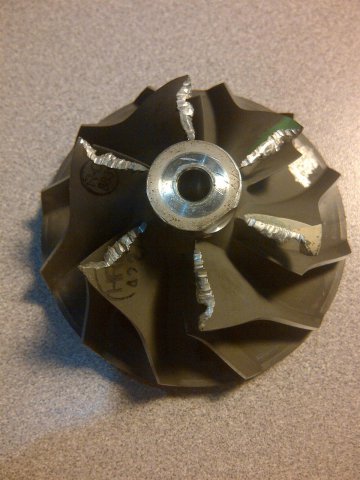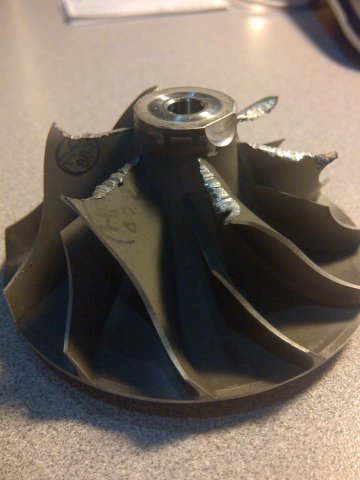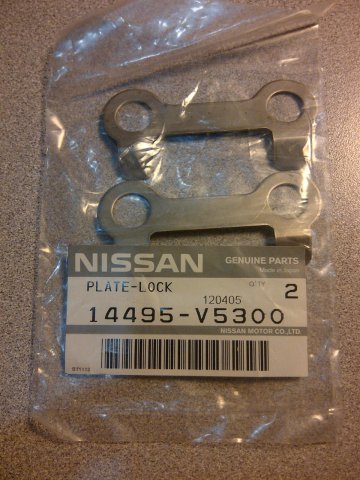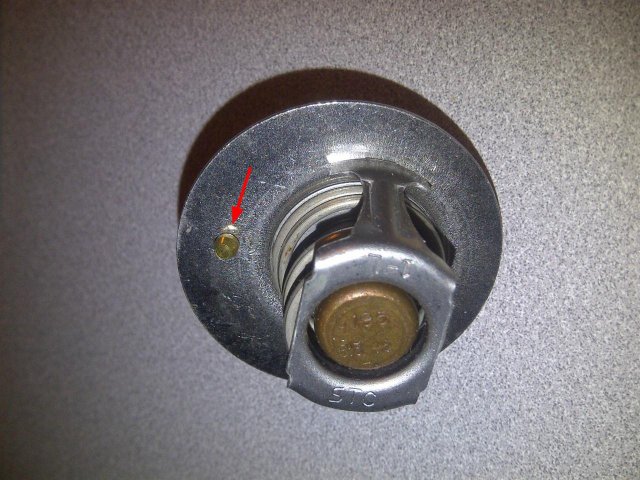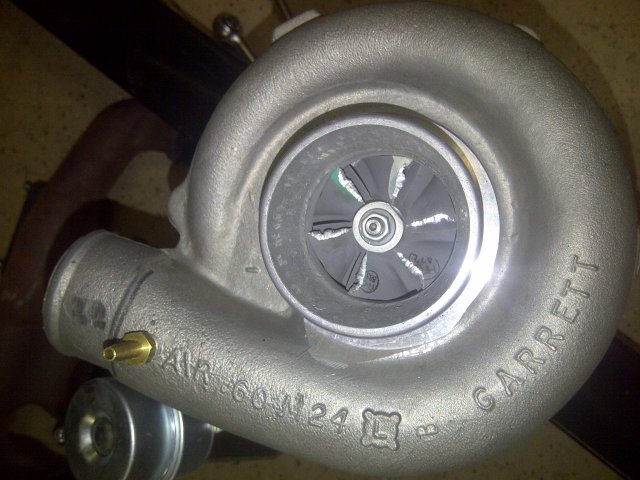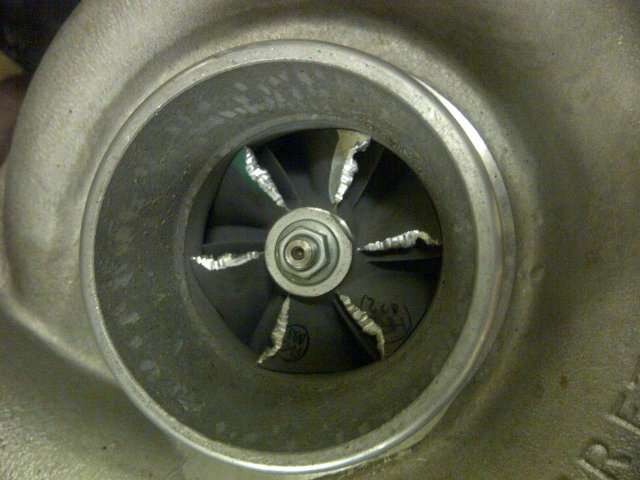-
Posts
1568 -
Joined
-
Last visited
-
Days Won
1
Content Type
Profiles
Forums
Blogs
Events
Gallery
Downloads
Store
Everything posted by Zmanco
-
Start by reviewing the log from cranking. Look to see that MS is in the crank mode and that you can see RPM (should be in the 250 rpm range). If you don't see that, then there's a problem with the distributor wiring. If you do see the engine cranking, then the problem is between MS and the coil.
-

CHTS or water temp sensor?
Zmanco replied to rickyellow zee's topic in Trouble Shooting / General Engine
The CHT sensor is not in the coolant circuit. Hence you can remove it an no fluid will escape. -
At this point it sounds like the cam swap is a red herring. Go back to basics: combustion requires air, fuel and spark. Let's assume you've got air worked out now with the rebuilt head. Spark: it's pretty simple to test if the non-firing cylinders are getting spark - pull the plug wire while it's running and bring it back to the tip of the spark plug. You should see a spark jump the gap. Or you can get a test lamp at a parts store and insert between the plug wire and the plug. Fuel: Like kiwi303, I believe the stock system fires the injectors in 2 batches, although I wouldn't expect them to be 1,5,6 and 2,3,4. With the engine running, take a hose with one end in your ear and bring the other next to each injector. You should be able to hear it clicking. Or you can put a screw driver on the injector and try to feel it. After running for a while, I would expect the non-firing plugs to come out wet from unburned fuel if the problem is due to lack of spark. Those are a few simple things you can do to begin trouble shooting.
-
The issue isn't due to Megasquirt - rather it's due to a variety of issues associated with elevated underhood temps and heat soak. One is the position of the MAT sensor (although I've experimented with mounting it in a variety of locations and they all had drawbacks), another is that the ECU doesn't know the temperature of the fuel and hence it's density. When that changes significantly (e.g. hot start), you have to tune around it. MS provides simple ways to do this (e.g. Warmup enrichment). Again, this is not a Megasquirt issue, nor a stock ECU issue. It's just part of the challenge (fun?) of installing fuel injection in our older cars that were never intended to have as much power and heat under the hood. Daniel
-
The pressure rating of the pump feeding the surge tank is unimportant as long as it has enough capacity to meet your engine's flow requirements. My setup is less than yours (~300 whp) so this may not be all that helpful, but I use an Airtex E8016S which is rated 2.5-4.5 PSI, 30 GPH to feed the surge tank. I isolated it using a rubber muffler strap. Like you, I'm using a Walbro 255 (only 1 though) to feed the injectors. I can only hear the pumps if I walk to the back of the car when it's idling. Inside the cabin the pumps are silent.
-
I purchased a rebuild kit and new wheel from G-Pop Shop and am sending the center section out to them for balancing. I upgraded to a 360 deg thrust bearing while I was at it. Here are some other pictures of the wheel. The deep gouges lead me to think that it wasn't the rubber from the intake hose that did the damage. Unfortunately I don't think I'll never know for sure.
-
Nuts are deformed thread. Here's a picture of the platelock along with part number. Unfortunately I found damage to the compressor wheel when I took things apart so that's slowing me down in getting it all reassembled.
-
As Gollum said, once you have it back together, get used to draining the water every time you drive it. My motor had sat outside for a long time before I picked it up and since I didn't need to tear the bottom end down, couldn't hot tank it. I'll bet that I flushed the cooling system well over 25 times before it was finally clear. And don't forget to open the heater valve before draining, otherwise you'll leave a lot of crud behind. Most of the flushes are just a mild acid. You could start with one, but as it sounds like you've got so much rust, it might not be worth it. But once you get to the point that the coolant comes out clear, then you might run the flush to clean the passages. FYI, I wouldn't put a lot of miles on the engine with just water as there won't be any lubricants for the water pump and that will shorten its life.
-

Rear Disc Brake 240z Conversion problem
Zmanco replied to Daphur280's topic in Brakes, Wheels, Suspension and Chassis
I've always used the non-Canadian version. I think that's your issue. -
You seem convinced that the failure of the ring land was not due to detonation and could only be avoided by using forged pistons. Please explain how you can you be so sure. I'll ask a second time: how much boost are you running? As a point of reference, I'm running the equivalent of 15 psi at sea level with cast pistons and have no issues with rings and lands. I also run Megasquirt and retard timing a few deg at the torque peak as well as utilize a knock sensor to pull timing further when that's not enough (e.g. 90+ deg days at the track). If you don't solve the underlying problem, you're going to repeat history. As Randy 77zt said "Forged pistons are not a crutch for poor tuning." Based on your brief description of the setup, experience suggests that's the likely root cause of the failure.
-
Are you sure that the land didn't break due to detonation? How much boost are you running?
-

So I was replacing the valve seals in my car....
Zmanco replied to MazerRackham's topic in S30 Series - 240z, 260z, 280z
You'll know as soon as you try to put the sprocket back on. -

S12+8 Toyota Upgrade Rotor questions
Zmanco replied to Wesley's topic in Brakes, Wheels, Suspension and Chassis
You say you will have 300+ HP. Do you plan to drive on road courses? If you do, I'd suggest going straight to Wilwoods. I am running the S12+8 in front and 240SX in rear with Hawk Blue in front and Hawk HT10 in rear and now that I'm pushing the same power as you, I'm at the thermal limit before the end of a 20 minute session. Plus, those pads are expensive ($300+ for the set) and don't look I'll get more than 4 track days out of them. As a point of reference, when I ran NA (175 hp est) I never had any issues with the setup using cheaper street pads at the track, so if your plans are only for the street, then the Toyota setup should be fine. -
Looks like the diesel pumps are NLA... but I have another question. I've done the mod to route coolant from cylinder 5 and 6 to the thermostat housing already. As I currently have the head off, I was thinking about plugging the internal coolant bypass as discussed here Looking at Rossman's diagram, I was thinking that it might make sense to enlarge the bypass hole in the t-stat to avoid water pump cavitation before the t-stat opens. Seems like the downside would be that it would take longer for the engine to warm up. I'm wondering how much of an improvement in cooling I could expect on the track as that's the only time I have any issues with cooling the engine. I realize there's probably no quantitative way to answer (unless someone did a before/after test), but I'm curious roughly how much coolant goes through the bypass vs. the radiator at higher revs (4-7k) that's typical on the track? If it's 10%, then I'd guess it's worthwhile. If it's 1-2%, then probably isn't worth the tradeoffs. Curious to read thoughts on the pros and cons.
-
I ordered a new compressor wheel and rebuild kit from G-Pop Shop. After I rebuild it I plan to send it back to them for balancing. I can't find a single shop in Colorado that balances turbos. Is it a rather specialized skill, or perhaps the market for it isn't that large? And Tony D, this wheel was only a little over $100. I imagine that one is precious.
-
I already have the head off and there's no visible damage I can see in the cylinders or the combustion chambers. Also, as I recall, the metal coil of the hose had remained intact, although I'm thinking the same thing as johnc that it's the likely culprit - even though I can't explain it. Now the challenge is to find a place to balance the assembly after I rebuild it. Anyone know of a place in the Denver area? I'd rather not have to ship it out.
-
I thought about what might have caused this some more and the only thing I can come up with is there was a track day where the intake hose had rubbed and allowed the rubber to separate from the metal coil that gives it shape and it had partially collapsed. At first it was a mystery why the engine was losing power on long straights but I later found the damaged hose in the garage. I don't recall looking at the inlet then so maybe the damage had already been done? It's been a while but IIRC the collapse was 6-12 inches upstream of the turbo intake so I can imagine that the collapsed rubber tube might have been pulled against the compressor. But given it's rubber, I don't think that explains the deep gouges I see on the leading edges of the compressor. Also curious about the lateral play in the shaft on the compressor side. I checked my logs and the turbo was purchased new 17k miles ago. It's a genuine Garret and has 9 track days for a total of about 1000 miles of track time. Is this just the normal wear and tear that comes from running on the track? FWIW, I've always run Mobile 1 10W30 synthetic, have a 25 row Earl's oil cooler and am careful to let the engine idle after hard running to cool before shutting down. Also, I can just barely feel a little play on the turbine side, but cannot see any movement, so I suppose the bearing wear is all on the compressor side. Should I just buy a rebuild kit and replace the bearing? Is there more to it than that? Any suggestions on resources I can study for rebuilding turbos before I tear into this?
-
I was pulling the turbo to install plate locks on the manifold nuts and noticed this damage to the compressor wheel. I've never run the car without an air filter attached so am really surprised to see this. It looks like something hard was rubbing against the blades. There is also more lateral play than there used to be - enough that the side of the blades can just begin to touch the housing, although the wheel still spins freely. I've looked inside the tube and cannot find anything at all. Any suggestions for what caused this? Also, looking for suggestions on where to source a new wheel? Rebuild kit?
-
Why don't you make your own using the plug from the old regulator? It's well documented on classiczcars.com. You'll just need to buy a diode from Radio Shack for a buck.
-

l28et swap running on three cylinders?
Zmanco replied to burn-t280zt's topic in Trouble Shooting / General Engine
I believe the injectors are powered by 2 circuits - 1 for the front three, and another for the back three. That's the only aspect of the FI L28 that I'm aware of that's segmented with the front three cylinders all having a common fail point. I'd start by checking the wiring for the injector dropping resistors to see if one of them has a poor connection. Just because you measure 12V one side of the injectors doesn't mean that the the circuit is able to conduct enough current for the them to fire properly. Make sure it's clean and has a good mechanical connection. -
Seems like a good place to ask what happens to the fluid after if boils and cools? Once it condenses back to a liquid, the pedal doesn't feel the same in my car - it's less firm, at least for the next few days after a track day. Do the properties of the fluid change after a boiling cycle? Perhaps the extreme temp degrades the fluid? Or does some of the fluid that's now a gas dissolve in the remaining liquid and then take a long time to eventually fully return to a liquid state? I know the simple answer is to just bleed the brakes again, but inquiring minds want to know
-
In Maximum Boost by Corky Bell, he lays out how to calculate what size piping is required. In my case where my goal was ~300 whp, 2.25" pipe was more than adequate. Going larger only makes it harder to install. It's worth taking the time to do the calculations to properly size the turbo and IC piping for your power goals.
-
Why are you not considering the Felpro?
-
The GM sensor part number is well documented on the Megasquirt site. Depending on which thermostat housing you are using, you may be able to use a bushing to adapt it to fit, or otherwise you will have to tap your own.
-
If you use the stock coolant sensor, you can't use it for the dashboard gauge.

